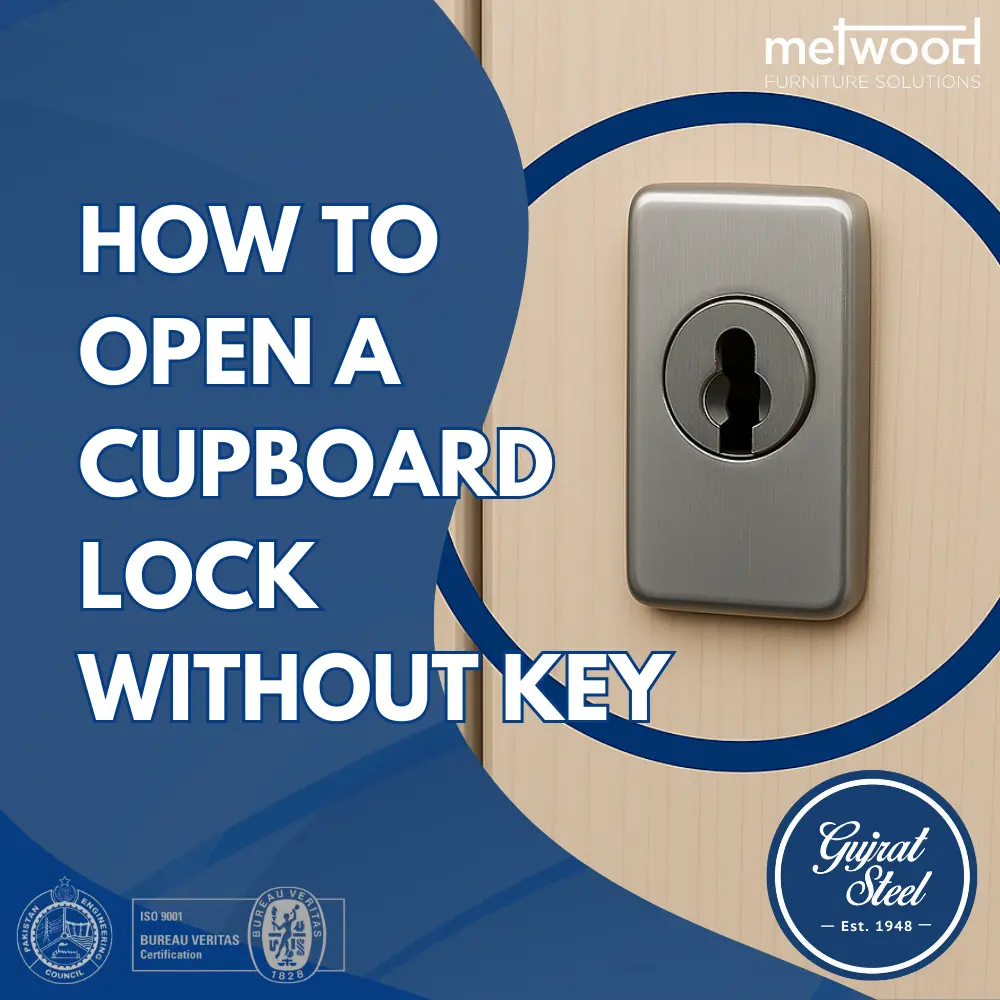Opening a locked cupboard without the key often involves trying non-damaging methods like shimming the latch or picking simple locks first, before considering forceful options as a last resort.
Key Takeaways
- Try Non-Damaging First: Always attempt methods like using a thin card to slip the latch (shimming) or trying to pick simple locks with household items before resorting to force.
- Understand Your Lock: The type of lock (simple wafer, pin tumbler, latch style) greatly influences which methods might work.
- Patience is Needed: Opening a lock without a key, especially picking, often requires patience and a gentle touch.
- Damage is Possible: Forceful methods like prying or drilling will likely damage the cupboard or lock and should be last resorts.
- Safety & Legality: Only attempt this on cupboards you own. Be aware of potential safety risks, especially with forceful methods. When in doubt, call a pro.
Table of Contents
Introduction
Uh oh. You’re staring at a locked cupboard, wardrobe, or cabinet, and the key is nowhere to be found. It’s frustrating, right? Maybe important documents are inside, or perhaps it’s just your favorite snacks! Whatever the reason, you need to get it open. While calling a locksmith is often the safest bet, sometimes that’s not immediately possible or practical. The good news is there are often ways to tackle simple cupboard locks yourself. This guide will walk you through some common techniques, starting with the gentlest options, to help you try and open your own locked cupboard when the key has gone missing. Remember to be patient and careful!
Before You Grab Any Tools: Stop and Think!
Hold on a second! Before you start trying to jimmy anything open, let’s cover some really important points:
- Is it Yours? (Legality & Ethics): This guide is ONLY for opening cupboards or furniture that you own and have simply lost the key for. Trying to open locks that don’t belong to you is illegal and unethical. Full stop.
- What Kind of Lock Is It?: Take a quick look. Is it a very simple wafer lock (often found on desks or filing cabinets, sometimes cupboards)? A basic pin tumbler lock (a bit more complex, like a simple padlock)? Or is it just a latch that clicks shut, possibly with a non-locking handle? The type of lock dictates the best approach. Some cheap cupboard locks are incredibly simple; others might be surprisingly tricky.
- Assess the Situation: How urgent is it? Is the cupboard valuable? Are you okay with potentially scratching or damaging the door or frame if things go wrong? Consider the potential consequences before trying forceful methods.
- Safety First: If you end up trying methods involving force or tools like drills, wear safety glasses! Things can slip or break unexpectedly.
Gathering Potential Tools (You Might Have These Already)

You don’t necessarily need specialized locksmith tools for simple cupboard locks. Look around for these common household items:
- Thin, Stiff Plastic: Think old credit cards, gift cards, plastic packaging inserts. (Be prepared for the card to potentially get damaged).
- Paperclips: The standard metal ones. You’ll likely need two – one to act as a pick, one as a tension tool.
- Bobby Pins: Similar to paperclips, these can sometimes be fashioned into makeshift picks and tension wrenches.
- Small Screwdrivers: Especially thin flathead ones. Sometimes useful as tension tools or for minor prying.
- Butter Knife or Thin Putty Knife: Use with extreme caution for specific techniques (like shimming) – they can easily damage wood.
- (Last Resort Only) Pry Bar / Sturdy Flathead Screwdriver: For forceful entry if all else fails.
- (Last Resort Only) Drill and Drill Bits: If you decide to destroy the lock cylinder.
Gentle Methods: Try These First!
Always start with techniques that are least likely to cause damage.
Method 1: Shimming the Latch (For Simple Spring Latches)
This often works on basic cupboards that don’t have a complex locking mechanism, but rather a simple spring-loaded latch bolt (the angled bit that clicks into the frame).

- How it Works: The goal is to slide something thin and flexible between the door and the frame to push the angled latch bolt back into the door, allowing it to open.
- The Tool: A sturdy but flexible plastic card is ideal. An old credit card often works, but it might get bent or broken. Sometimes thin, stiff packaging plastic is better.
- The Technique:
- Wedge the card into the crack between the cupboard door and the frame, right where the latch is located.
- Push the card inwards firmly while also wiggling it slightly up and down.
- You might need to angle the card slightly, trying to slide it along the angled face of the latch bolt.
- While pushing the card in, gently pull or jiggle the door handle.
- If you feel the latch give way, pull the door open quickly before it clicks shut again.
- Patience: This might take a few tries and some wiggling. If the gap is very tight or the latch isn’t spring-loaded or angled, this method won’t work.
Method 2: Picking Simple Locks (Paperclips/Bobby Pins)
This works best on very basic wafer locks or simple pin tumbler locks often found on cheap furniture. More complex locks will likely resist this. This requires the most patience and a bit of feel.
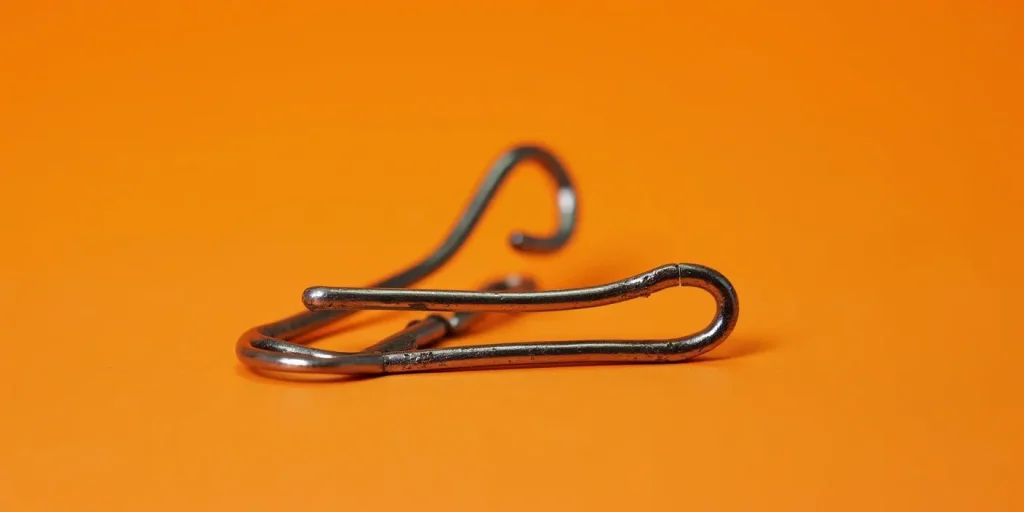
- Making Your Tools:
- Tension Wrench: Straighten out one paperclip. Bend the very end into a small ‘L’ shape (about 1 cm long). This tool applies slight turning pressure to the lock cylinder.
- Pick: Straighten out another paperclip, leaving a very small upward bend or hook right at the tip. This is used to feel and push the internal pins or wafers. Bobby pins can also be used – break off the wavy end, use the straight part for the pick, and bend the looped end for tension.
- How it Works (Simplified): Most simple locks have internal parts (pins or wafers) that need to be lifted to the correct height simultaneously to allow the lock cylinder to turn. The tension wrench provides slight turning force, while the pick lifts the pins/wafers one by one until they reach the ‘shear line’.
- The Technique:
- Insert the tension wrench into the bottom part of the keyway and apply light turning pressure in the direction the key would normally turn. Don’t force it – just enough to bind the pins slightly.
- Insert the pick tool into the top part of the keyway. Gently ‘rake’ it in and out, or try to feel for individual pins/wafers and push them upwards gently one at a time.
- Listen and feel for tiny clicks as pins set. Maintain the light turning pressure with the tension wrench.
- If a pin feels springy, it’s likely set. Move to the next. If it feels solid, it might be binding – you might need to slightly release tension and try again.
- When all pins/wafers are set at the shear line, the tension wrench should turn the cylinder, unlocking the door.
- Key Points: Light tension is crucial. Too much pressure binds everything up. Be gentle with the pick. This takes practice and feel – don’t expect immediate success.
Method 3: Jiggling (Less Reliable)
Sometimes, with very worn or loose locks, simply inserting a thin piece of metal (like the pick tool, or even a small key from another simple lock) and gently jiggling or rocking it up and down while applying light turning pressure can randomly hit the right combination. It’s a long shot but costs nothing to try for a few seconds.
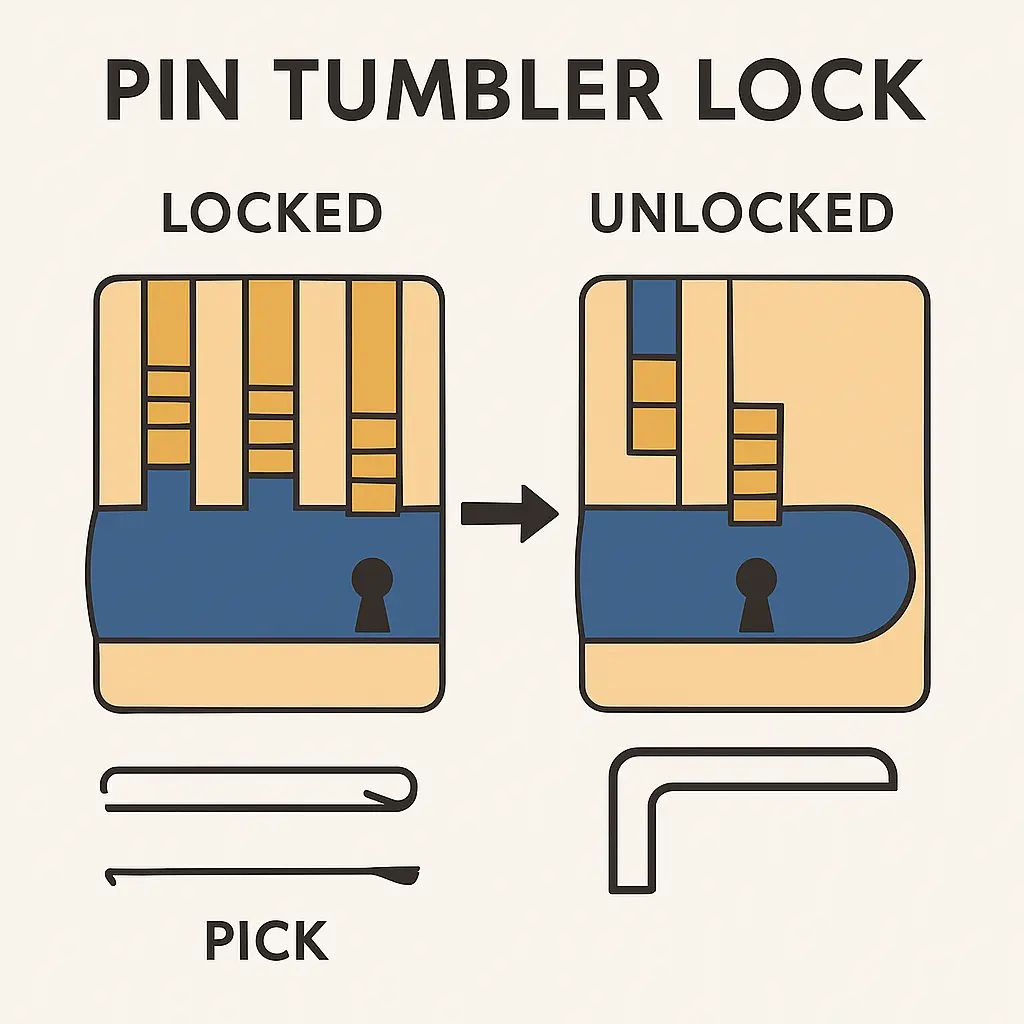
Last Resorts: Forceful Methods (Potential Damage Ahead!)
If the gentle methods haven’t worked and you absolutely need to get in, you might consider these options. Proceed with extreme caution, as damage is very likely.
Method 4: Careful Prying
This aims to physically force the door open or bypass the lock mechanism.
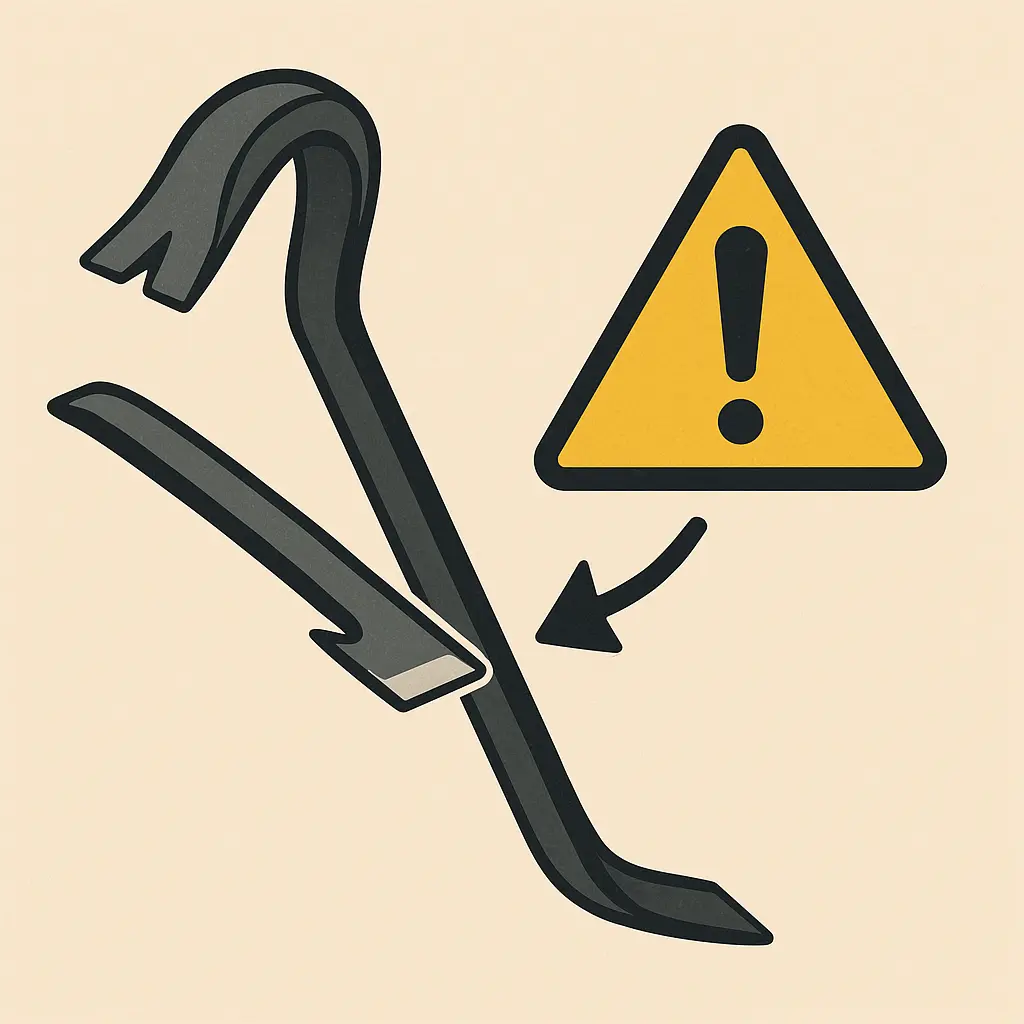
- Where to Try: Look for weak points. Can you insert a thin but sturdy tool (like a strong putty knife or maybe a flathead screwdriver wrapped in cloth to minimize scratching) between the door and frame near the lock? Or perhaps near the hinges?
- The Risk: You can easily gouge the wood, splinter the frame, bend the door, or break the lock mechanism entirely. This often causes more damage than just replacing the lock later.
- Technique (Use Caution!): If you attempt this, apply steady, gradual pressure rather than sudden jerks. Try to lever the door away from the frame just enough for the latch or bolt to slip past. This is rarely a ‘clean’ method.
Method 5: Drilling Out the Lock
This is the point of no return – it will destroy the lock, requiring replacement. Only do this if you are comfortable with drilling and accept the lock is ruined.
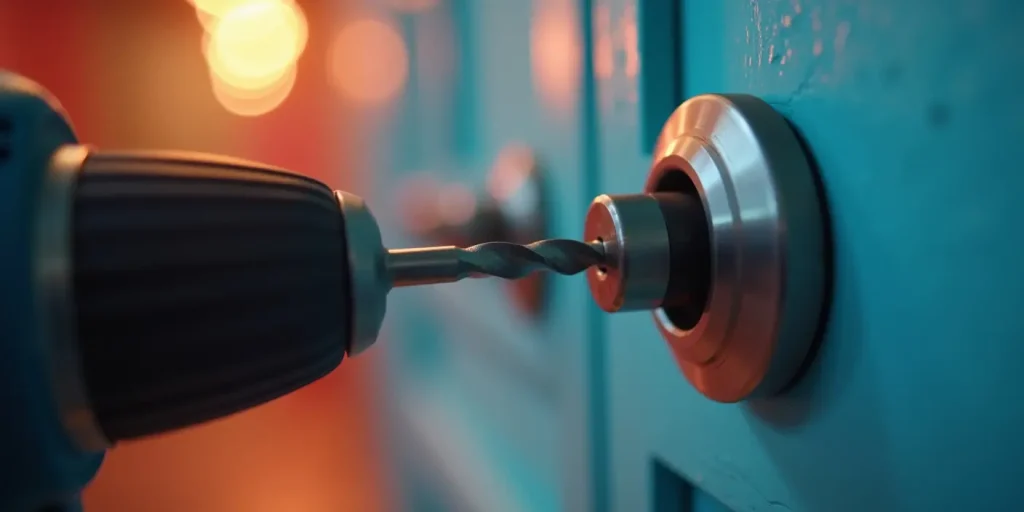
- Safety First: Wear safety glasses! Metal shavings can fly.
- The Target: Aim for the center of the lock cylinder (where the key goes). You are trying to drill through the internal pins/wafers, destroying them so the cylinder can be turned or bypassed.
- The Process:
- Start with a small drill bit and drill a pilot hole directly into the keyway.
- Gradually increase the drill bit size.
- Drill slowly and steadily. You should feel resistance as you hit the pins/wafers.
- Once you’ve drilled through the pin stack, you might be able to insert a flathead screwdriver into the keyway and turn the damaged mechanism to unlock it.
- Outcome: The lock is destroyed. You’ll need to remove it completely and install a new one. There’s also a risk of the drill bit slipping and damaging the door face.
Know When to Fold ‘Em: Calling a Professional
Sometimes, DIY just isn’t the answer. Call a qualified locksmith if:
- You’re not comfortable attempting any of these methods.
- The lock seems complex or high-security (unlikely on a basic cupboard, but possible).
- The cupboard or its contents are valuable, and you can’t risk damaging them.
- You’ve tried the non-destructive methods patiently without success.
- You simply want the quickest, cleanest, damage-free solution.
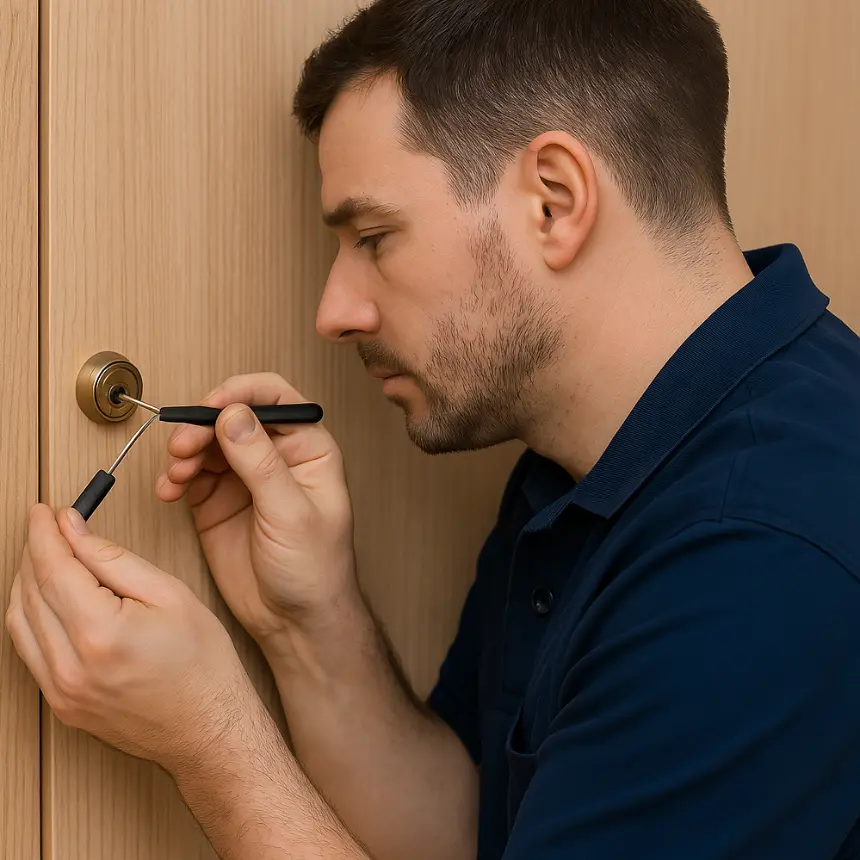
A professional locksmith has the right tools and expertise to open most locks quickly and often without any damage at all. It costs money, but often less than repairing damage caused by a failed DIY attempt.
Conclusion: Success and Moving Forward
Getting locked out of a cupboard is annoying, but hopefully, one of these methods worked for you. Remember that starting gently with techniques like shimming or careful picking is always the best first step. Forceful methods should only be considered when absolutely necessary, accepting the high risk of damage. Always prioritize safety and only work on locks you own. And maybe, just maybe, consider getting a spare key made once you’re back inside!



